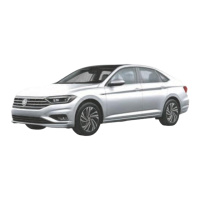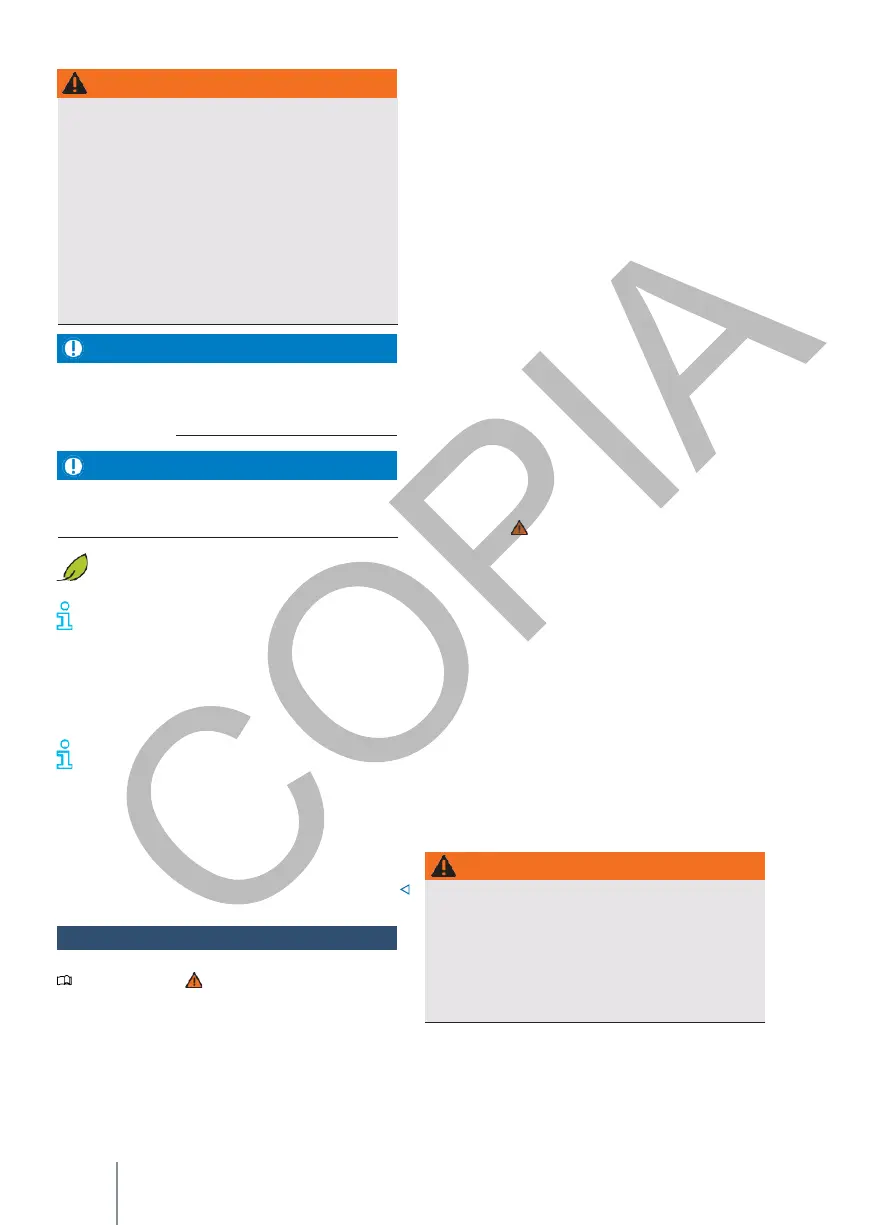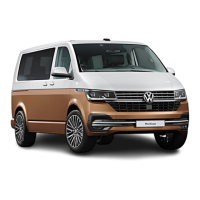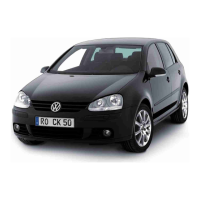The use of unsuitable or damaged tyres can
impair driving safety, cause accidents and lead to
serious injuries.
•
Use only tyres approved for the vehicle in
question.
•
Periodically check the rims for damage and
replace them if necessary.
Avoid hard knocks and, as far as possible, driving
over obstacles. Potholes and kerbs are the most
common cause of tyre deformations. These
deformations can damage tyres and rims.
If tyres are replaced, care must be taken not to
damage the valves and sensors. Never drive
without valve caps. The valves may be damaged.
Always dispose of old tyres properly in
accordance with the applicable regulations.
If the spare wheel is different from those
fitted to the vehicle, e.g., when the vehicle is
equipped with a
If winter tyres are fitted or if it is an emergency
wheel, use it only briefly in the event of a
breakdown and drive with due caution. Replace it
as soon as possible with the normal wheel.
In the case of Volkswagen-approved tyres, it is
guaranteed that the tyre dimensions will be as
large as possible.
The tyre is suitable for the vehicle. In the case of
other tyres, the seller must provide a certificate
from the manufacturer stating that the tyre in
question is also suitable for the vehicle. Keep this
certificate in the vehicle in a suitable place.
The wheel bolts must have the correct length and
head. This ensures that the brakes can function
correctly and that the vehicle can be driven in a
stable and safe manner.
For technical reasons, it is generally not possible to
use wheels from other vehicles. In certain
circumstances, this applies even to wheels of the
same vehicle type.
The tightening torque of the wheel bolts must be
checked regularly with a properly functioning torque
spanner → page 273.
Wheel bolts
Always use the appropriate wheel bolts for the
respective vehicle type and always tighten them to
the correct torque.
→ p. 273.
Rims with a rim or
screw-on
trim elements
Wheels with a rim or screw-on trim elements
consist of several parts. These parts are bolted
together with special bolts. Damaged rims must be
replaced and may only be repaired by a specialist
workshop. Volkswagen recommends a Volkswagen
dealership → .
Wheel rim identification data
In some countries, newly manufactured wheels
must be marked with details of certain
characteristics. The following data may appear on
the wheel rims:
—
Stamp of conformity
—
Rim size
—
Name of manufacturer or brand name
—
Date of manufacture (month/year)
—
Country of origin
—
Manufacturing number
—
Raw material batch number
—
Product code
Wheel rims and wheel bolts
Please note
see at the beginning of this
chapter,
on page 259.
The rims, tyres and wheel bolts are designed for
the type of vehicle in question. Therefore, if the
rims are changed, they must be used for the type of
vehicle in question.
The wheels must have the necessary space to
rotate from a constructional point of view. If this
is not the case, the tyres could rub against
undercarriage components, bodywork and brake
lines, which could lead to failure of the braking
system and tread separation, resulting in possible
tyre blowout.
•
Never use tyres whose effective dimensions
exceed the dimensions of the tyres approved
by Volkswagen, or tyres which do not comply
with the Volkswagen tyre manufacturer's
specifications.
The vehicle shall not be fitted with any other
vehicle parts.

